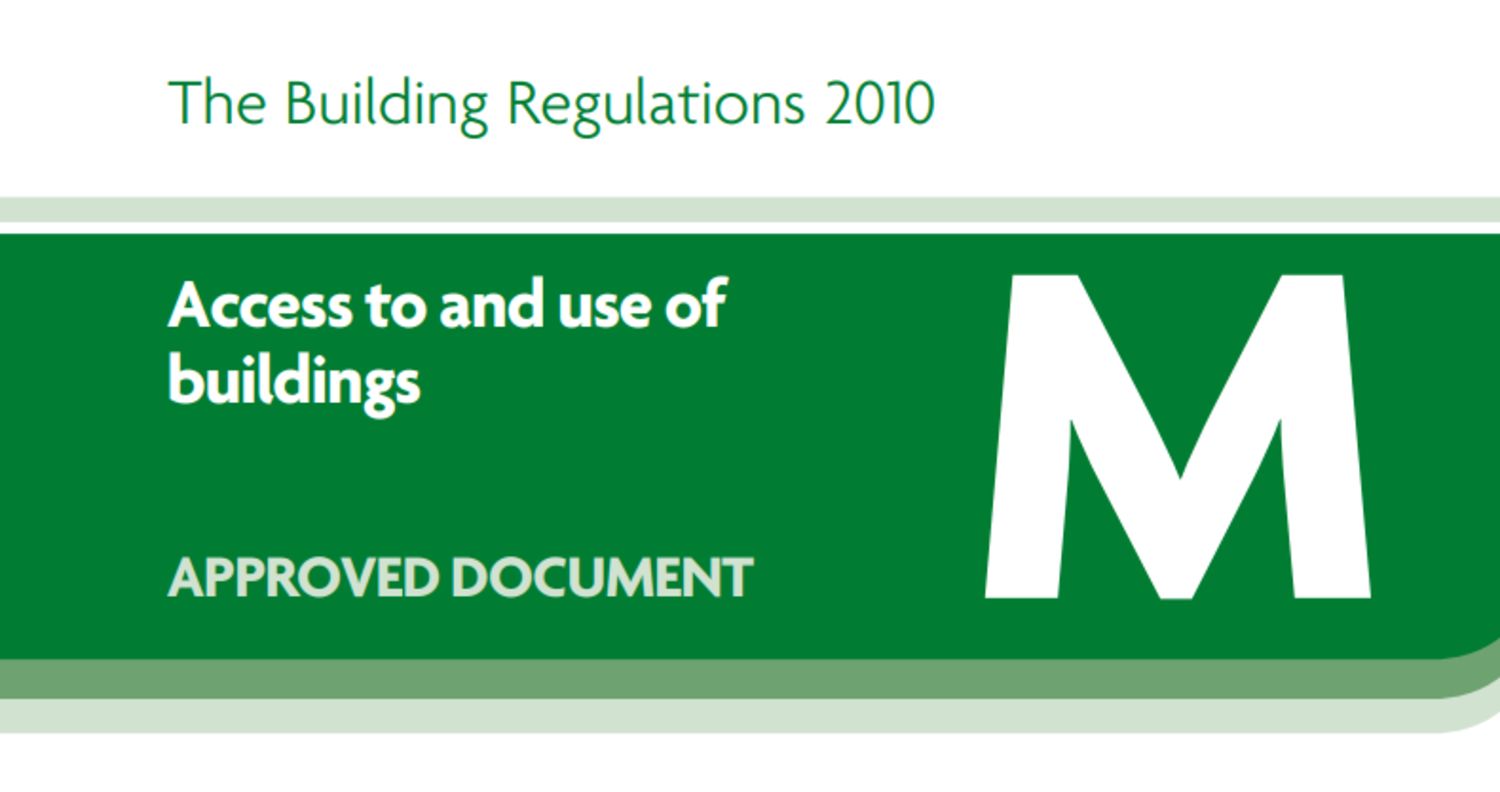The Machinery Directive
This sets requirements for machines, safety components and lifting accessories. It includes automatic doors within its scope and its objective is to ensure a high level of safety for all machine users.
Building regulations: M, R & S

Part M of the regulations sets minimum legal standards for access and use of buildings by all building users, including disabled people in England and Wales.
In Scotland, access requirements are integrated into general Technical Standards. These apply to: new buildings; conversions; extensions to existing buildings (but not to the existing buildings themselves); and parts of a building that are altered or that are adversely affected by an alteration being carried out elsewhere in the building
In Northern Ireland, Part R of the Building Regulations (NI) covers Access and Facilities for Disabled People and is supported by Technical Booklet R:2006. Dormakaba has extensive understanding of how these regulations relate to accessibility of entrances and can provide a high level of support to specifiers in order to ensure all aspects of a project have been considered and appropriate options understood.
BS EN 16005

This standard is harmonised with the Machinery Directive and came into effect in April 2013. From this date all new automatic doors installations must conform to this standard.
It covers safety in use of power operated pedestrian doorsets used for normal access as well as in escape routes and as fire resistance and/or smoke control doorsets. The type of doorsets covered include power operated pedestrian sliding, swing and revolving doorsets, including balanced doorsets and folding doorsets with a horizontally moving leaf.
Compliance with this standard is essential to ensure safe operation for all potential users including children, the elderly, disabled or infirm therefore support and guidance can be provided on the types of safety measures that should be implemented.
BS 7036
BS 7036:1996 is the code of practice for safety at powered doors for pedestrian use. It is published in five parts, part one is general, parts two to five are specific to door type.
Part 1 – General
Part 2 – Straight, curved, prismatic and folding sliding doors
Part 3 – Swing and balanced doors
Part 3 – Low energy swing doors
Part 5 – Revolving doors
BS 7036-0 is the code of practice for risk assessment and reduction associated with automatic doors. It stipulates a requirement to carry out a risk assessment for each door prior to usage, with the duty to do so falling on all key stakeholders including specifiers, installers, main contractors and landlords.
dormakaba can provide specifiers with a completed BS 7036-0 risk assessment at the design stage. This ensures that architects and designers have complete peace of mind that the automatic doors being specified provide the required level of safety for the application they are being used for and the types people using them.
BS 8300
This is a UK wide standard that works alongside Building Regulations in order to provide a definitive guide to designing accessible and inclusive environments which includes the practical use of entrances.
It is applicable to a wide range of buildings used by the public and is separated into two parts:- BS 8300-1 – for external environments e.g. car parks and access routes. BS 8300-2 – for buildings e.g. internal layout and facilities.
dormakaba can support compliance with this standard by using its vast experience and understanding in this area to conduct a review of entrance system requirements on your project in order to ensure that the most appropriate solutions are identified and evaluated.
Equality Act

This act makes it unlawful to treat disabled people less favourably than others for a reason related to their disability Architects and designer therefore have to unsure that buildings are designed to eliminate any physical barriers to access.
dormakaba can ensure compliance by combining its market leading knowledge of automatic and manual entrance solutions together with extensive understanding of building regulations and BS8300 in order to identify issues and provide options to address them successfully.
Health & Safety

Compliance with health & safety requirements is paramount when specifying and operating automatic doors therefore dormakaba provides support to architects and designers in order to
Access the risks
Propose practical measures to control them
Ensure that they are fully controlled